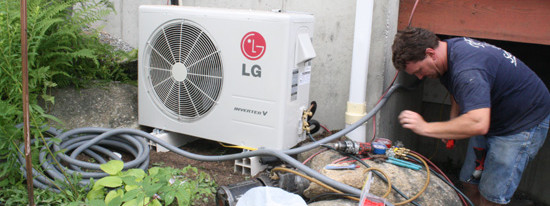An air conditioning unit's filters, coils, and fins need regular upkeep for the unit to operate successfully and effectively throughout its years of service. Ignoring essential upkeep guarantees a steady decline in air conditioning efficiency while energy usage steadily increases. Have a look at our Energy Saver 101 Infographic: Home Cooling for more ways to assist improve your comfort and the performance of your air conditioning system.
A/c Unit Filters
The most essential upkeep job that will ensure the efficiency of your air conditioning unit is to routinely replace or clean its filters. Obstructed, filthy filters block regular airflow and minimize a system's effectiveness substantially. With typical air flow blocked, air that bypasses the filter might bring dirt directly into the evaporator coil and impair the coil's heat-absorbing capability. Changing an unclean, blocked filter with a tidy one can decrease your ac system's energy consumption by 5% to 15%.
For central air conditioning conditioners, filters are typically located somewhere along the return duct's length. Common filter locations remain in walls, ceilings, heating systems, or in the air conditioner itself. Room air conditioning system have a filter mounted in the grill that faces into the room.
Some kinds of filters are reusable; others should be changed. They are readily available in a range of types and efficiencies. Clean or change your air conditioning system's filter or filters every month or more during the cooling season. Filters might need more frequent attention if the air conditioning system is in continuous http://query.nytimes.com/search/sitesearch/?action=click&contentCollection®ion=TopBar&WT.nav=searchWidget&module=SearchSubmit&pgtype=Homepage#/ΕΠΙΣΚΕΥΗ AIR CONDITION use, is subjected to dirty conditions, or you have fur-bearing animals in your house.

Air Conditioning Unit Coils
The air conditioning unit's evaporator coil and condenser coil gather dirt over their months and years of service. A tidy filter prevents the evaporator coil from staining rapidly. In time, however, the evaporator coil will still gather dirt. This dirt lowers airflow and insulates the coil, decreasing its capability to soak up heat. To avoid this issue, check your evaporator coil every year and tidy it as essential.
Outdoor condenser coils can also end up being really filthy if the outdoor environment is dusty or if there is foliage nearby. You can quickly see the condenser coil and notice if dirt is gathering on its fins.
You should minimize dirt and particles near the condenser system. Your dryer vents, falling leaves, and lawn mower are all possible sources of dirt and debris. Cleaning the area around the coil, removing any particles, and cutting foliage back at least 2 feet (0.6 meters) enable appropriate air flow around the condenser.
Coil Fins
The aluminum fins on evaporator and condenser coils are easily bent and can block air flow through the coil. Air conditioning wholesalers sell a tool called a "fin comb" that will comb these fins back into almost initial condition.
Condensate Drains pipes
Sometimes pass a stiff wire through the unit's drain channels. Clogged drain channels avoid a system from decreasing humidity, and the resulting excess moisture may blemish walls or carpet.
Window Seals for episkevi air condition athina Space Air Conditioners
At the start of each cooling season, inspect the seal in between the air conditioning system and the window frame to ensure it reaches the system's metal case. Moisture can harm this seal, permitting cool air to escape from your home.
Preparing for Winter season
In the winter, either cover your room ac system or remove and keep it. Covering the outside system of a central air conditioning conditioner will safeguard the system from winter season weather and debris.
Working with a Specialist
When your air conditioning unit requires more than regular upkeep, work with a professional service technician. A well-trained professional will discover and fix issues in your air conditioning system.
The professional needs to:
Look for proper amount of refrigerant
Test for refrigerant leakages using a leak detector
Catch any refrigerant that must be evacuated from the system, instead of illegally releasing it to the environment
Look for and seal duct leakage in central systems
Procedure airflow through the evaporator coil
Verify the appropriate electrical control series and make sure that the heating unit and cooling system can not operate all at once
Check electric terminals, clean and tighten connections, and use a non-conductive finish if essential
Oil motors and inspect belts for tightness and wear
Examine the precision of the thermostat.